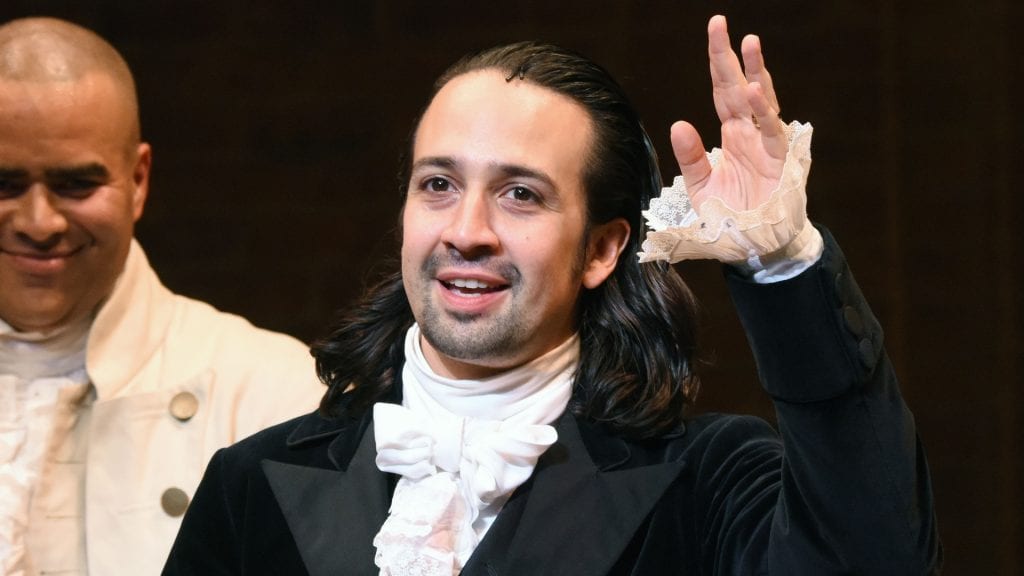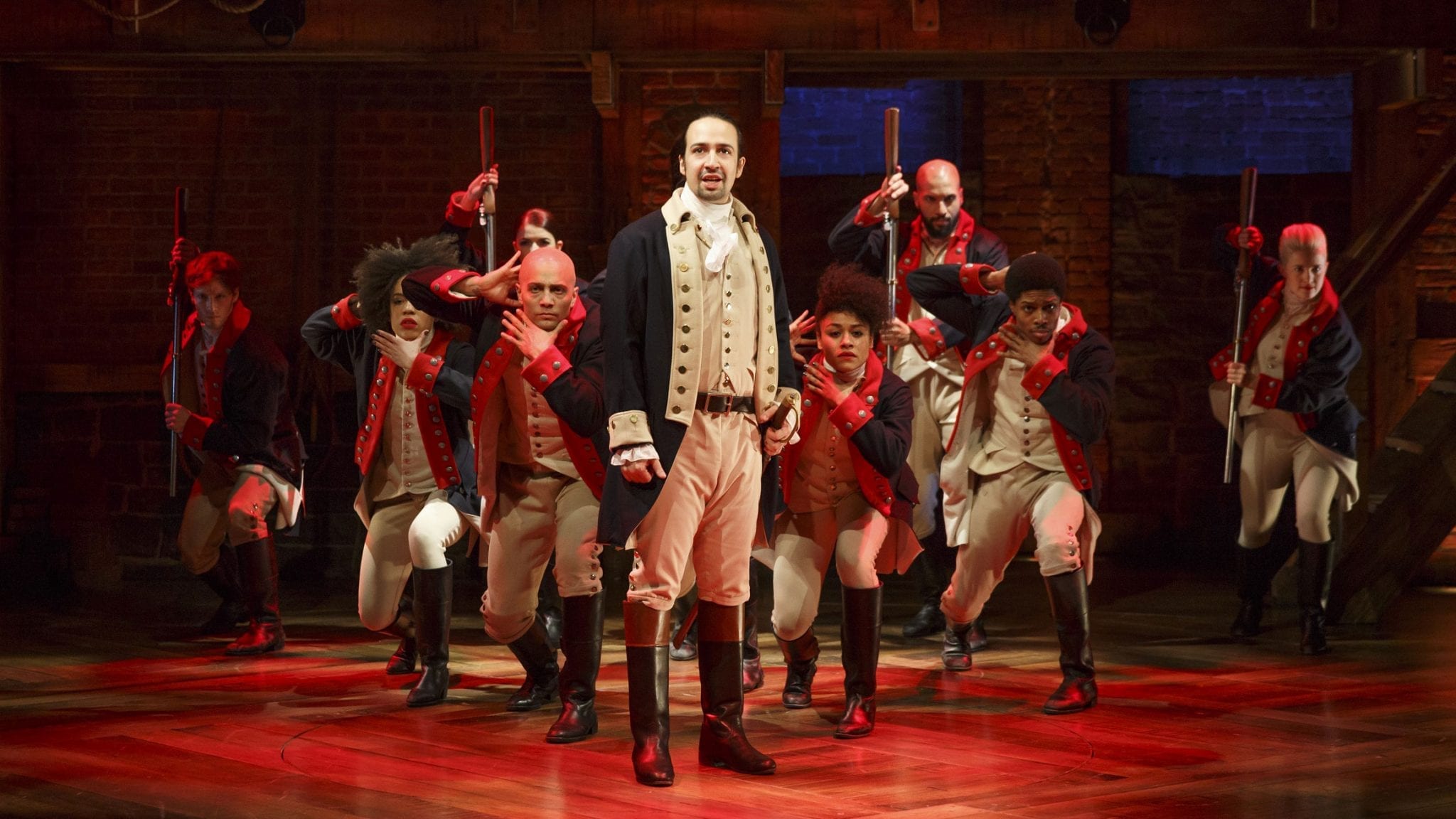The Disney+ streamed version of Hamilton is a product of multiple eras in many respects. The breeches, dresses and bayonets belong to 1776- Alexander Hamilton arrives in New York as a “bastard, immigrant, son of a whore”. But this particular production of Hamilton also belongs to the New York of 2016; it was filmed in the Richard Rodgers Theatre with the original Broadway cast, as a “supreme artistic expression of an Obama-era ideal of progressive, multicultural patriotism”. In the context of Black Lives Matter protests, and the ongoing impact of Trump’s presidency, the show has a poignancy Lin-Manuel Miranda could not have predicted in 2016.

It would be a mistake to transform Hamilton into a glossy, historical period film a la Les Misérables.Instead, the medium of cinematography is exploited to its utmost impact within the stage show’s original setting. Thomas Kail artfully directs, providing more than just a recording of a stage production. Of course, the impact of this production of Hamilton also comes from its all-star cast; this is the only time many will be able to see Lin-Manuel Miranda in the titular role of Alexander Hamilton.
Kail uses the camera to explain why the original cast is, now, so in demand, providing a view which cannot be attained in the theatre – unless you ran through the audience, leapt over the band’s pit and threw yourself onto the front of the stage. Angelica’s (Renee Elise Goldsberry) incredible facial expressions as Burr tries to flirt with her, Eliza’s (Philippa Soo) tears as she loses her son, King George III (Jonathan Groff) letting out spit in You’ll Be Back: it’s a visceral, new experience – you can’t get this detail as an audience member, no matter how expensive your ticket.
Of course, there are moments where the live production is simply more effective. Upon Alexander Hamilton’s entrance in the opening number, the audience typically bursts into applause. Here, there is quiet, and a close cut to his face (rather than the striking silhouette with which the audience is typically greeted). This change is surely deliberate – the audience can be heard cheering upon Thomas Jefferson’s (Daveed Digg) entrance, and “immigrants, we get the job done” (rightfully) receives a huge audience response.
Howell Binkley’s lighting design and Andy Blankenbuehler’s choreography both deserve reference. A purple wash for George III switches to blue, showing the desperate situation of the revolutionaries, then a yellow spotlight on Washington and Hamilton warms the stage, suggesting hope. This is then intensified into an orange glow as Madison, Jefferson and Burr plot Hamilton’s downfall in Washington on Your Side – Hamilton’s ambition has become his downfall. It’s worth re-watching just to follow the movement of different characters, whether it’s the bullet – a member of the ensemble who moves closer and closer to Hamilton as his Greek tragedy of a fall approaches– or the impressive bayonet handling in Yorktown. Without a hefty price tag, such viewings are possible.
The close shots provide new ways of understanding the show. Eliza’s question to Alexander – “if I could grant you peace of mind, would that be enough?” – is as much directed to herself as it is to him. This is unnoticeable in the cast recording, but clear in this version. She triumphs in Burn, rising above her constantly ascending husband with furious glances upward.
However, there are some moments which clash with the current political atmosphere as we inspect our own history. The characterisation of Sally Hemings- Thomas Jefferson’s slave and mistress – as a high-kicking, shimmying diva is not the most culturally sensitive. George Washington’s ownership of slaves is only referenced with a remorseful look and a step out of the spotlight. His shameful past is reduced to a moment for ‘top fans’ to spot. Hamilton’s involvement with the slave trade is similarly ignored. But are these sufficient reasons to ‘cancel’ Hamilton? The musical is complex and nuanced enough to be able to hold conflicting truths and not break. Its conscious casting and reclamation of narrative provide material for reconsideration, rather than cancellation.
Hamilton is magnificent. It keeps the passion and intensity of a live performance, whilst adding some breath-taking, intimate shots. Witty, wonderful and now accessible to the masses, Hamilton is the perfect antidote to lockdown delirium. While some of its revolutionary messages don’t stand up to muster in the current climate, it also gives us an opportunity to reflect on who tells our stories and how we tell them. As Hamilton says in the show’s final moments, “what is a legacy?”
Words by Abigail Howe.
